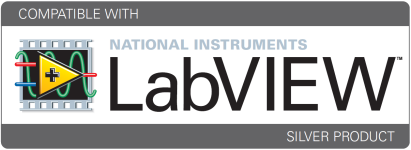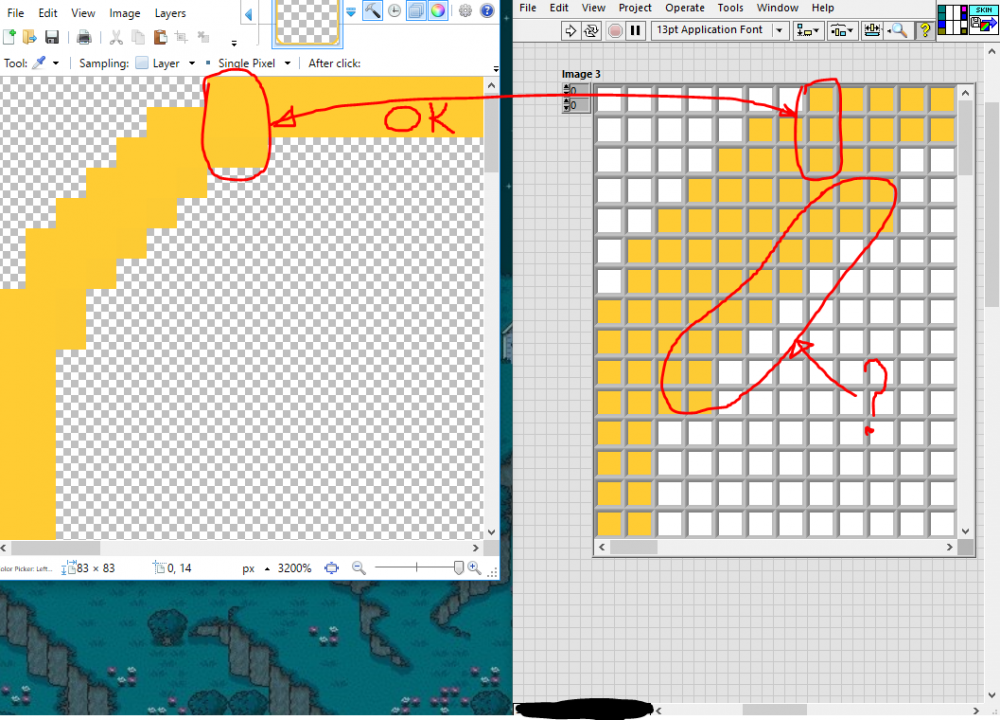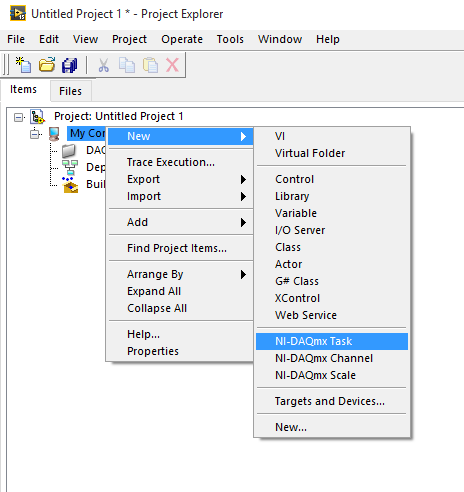-
Posts
1,198 -
Joined
-
Last visited
-
Days Won
112
Content Type
Profiles
Forums
Downloads
Gallery
Everything posted by Neil Pate
-
So anybody want to give me a license to edit these xnodes?
-
Yeah I forgot to actually say I like it, but have not really kicked the wheels very hard yet
-
The file attachment works ok, but the image is missing in Jack's first post linked below Edit: I do like how the hyperlink is automatically "expanded"
-
Off-topic indeed, but I would love to chat about it I generally don't back up my "PC" i.e. the OS etc. I know I should, just never get around to it. All my dev stuff is in Bitbucket (so offsite) and a NAS on site. I try to not go more than a day without pushing my changes out to these backup sites. I use VMs for old versions of LabVIEW and for testing purposes. (Even more offtopic, I use CrashPlan offsite backup for my personal stuff like photos and videos etc) In London I was pretty happy with 150 Mbps broadband and still that is way to slow to regularly upload multi-gig VMs. I never got sophisticated enough to do things like rsync with my VMs, so they just ended up being stored locally on a big mechanical HDD. Now that I am living where broadband is not so good (1 Mbps) I really really cannot synch VMs. My question is just this; how do you synch your VMs offsite? Is there some clever stuff going on in OS X that does diffs and stuff to a VM container so it only uploads the small changes?
- 25 replies
-
- open source
- alternative
-
(and 1 more)
Tagged with:
-
Michael, one of the biggest problems for me with using a VM per project is how to do you manage physical offsite backup of VMs?
- 25 replies
-
- open source
- alternative
-
(and 1 more)
Tagged with:
-
-
- effects
- user interface
-
(and 3 more)
Tagged with:
-
Ah ok. Definitely did not come across that and I poked around in the API quite a bit.
-
Yes, it definitely is a bit bare-bones. Especially comparing it with the old "vanilla OPC" API that is included with the DSC toolkit. What is an OPC-UA method?
-
Quite happy with it James... After NI patched the issue I mentioned in my first post that prevented proper authentication with name+password. I never got certificates working properly either, but this may have also been fixed by the patch. I have mainly used it as a client, and have production ready code stable with with approx 100 tags. I have created some proof of concept code to run the server side as well and it worked fine. My only issue is that the server does not allow to register for listeners, so you have to poll. I don't really know all the nuances of OPC-UA so perhaps this is normal, it just seems strange that the client can get periodic events (nicely handled in an event structure), but the server has to poll. I am planning on using it in several more projects, it certainly seems to do everything I need and is much easier to integrate into your codebase than other OPC-UA toolkits.
-

Problems installing DAQmx/Vision, only on Windows 10?
Neil Pate replied to Neil Pate's topic in LabVIEW General
Tried to install Vision again today, this time 2015 SP1 on a fresh installation of Win10 and same problem. Grrrr. Something is weird about my PC though, if I install the Intel LAN drivers I also get a hard crash Edit: narrowed this down a bit, seems to be PXI Service Runtime 2015. Is this even necessary for a "normal" PC? -
Yup, I had the same thought actually about modifying the x node to take a DVR. Going to tinker with this when I get a moment. One of my issues with the CVT is that as it stands everything is a double right?
-
Very nice indeed I am thinking about using this in a project where I have to interface with some external equipment via OPC-UA and some other custom protocol. I have lots of "variables" (tags) and want to experiment how things can be done as much as possible by just using a channel name in my code rather than individual element access. Anybody given any thought as to how best to share the variant between processes? Lots of options here, as Kahrma mentioned perhaps a good technique is a DVR?
-
Ah yes, that is the same VI "GDI Resize" I am using now (Thanks Darin.K). Internally that VI does use the PNG Data to Lv Image. That solution works perfectly, I get a pixel perfect representation of my PNG file.
-
-
Chris, both images are the same size, the picture from the left is from paint .net, the one on the right are just the pixels represented by colourboxes. hooovahh, I think you are right. I actually found code on my PC very similar to what you linked to, and I tried this and it works perfectly. By the way, I also give credit and thanks to the author of the VI I found on my PC that I downloaded from lavag some time ago, it is called GDI Resize.vi So my conclusion is that something strange is happening in the PNG Read VI. I think I have peeked into it before and it is just a LabVIEW.exe function call wrapped?
-
Hi All, I am getting some strange behaviour when using LV to read a PNG file. For reasons I cannot explain I get coloured pixels where I do not expect them. The attachment shows what I expect versus what LV is giving me. I have tried playing around with the transparency threshold input as a last resort but this does not seem to have too much effect. Any ideas? Any other tricks for reading a PNG file?
-
Hi, sorry I just saw your post now. There is no tutorial I know that mixes LabVIEW and SDL. I basically used lazy foos SDL tutorial (http://lazyfoo.net/SDL_tutorials/) which are done in C, and just ported the logic to LabVIEW, wrapping the SDL DLL as needed.
-

Cannot Create DAQmx task in virtual folder
Neil Pate posted a topic in Development Environment (IDE)
Hi, Strange behaviour I am seeing in LV2015 32-bit (Win10). For some reason I cannot create a DAQmx task in a Virtual Folder in the project, only directly under My Computer. I am pretty sure I used to be able to do this. Any ideas what is going on here? -
Smashing! That method does work, but it looks like the FP containing the control should not be open when this occurs, so it does not seem to be like clicking "Apply". Dunno, maybe I am still doing something wrong. Anyway, although this is a bit of a pain I think I can make this work now. Thanks Shaun
-
It is a strict typedef. Something like this? Does not seem to work for me. I can get it to work if I open the typedef, change it from strict to plain, apply changes, change back to strict and re-apply changes. Then everything is in sync.
-
Hi, I have created some code to programatically replace the pictures in a boolean. I am applying my logic to a strict typedef and it works nicely. However my changes to this typedef do not seem to be propagated properly to a VI that uses the control. In my solution the front panel of the VI with the control is open, and I have a reference to the control I wish to modify. From there I get the typedef control, and then update it using the LabVIEW resource functions. After that I update call the Update Typedef method. In the project I sometimes get a message that the file has changed if I then try and open the .ctl, and if I allow that the new skinning is indeed working, however in the original FP the control still contains the existing pictures. In the typedef I cannot apply changes as this menu operation is disabled. I have tried mass compiling and it to does not seem to pick up the new changes. Any ideas what I am doing wrong?
-

Public Content for Web Services
Neil Pate replied to Neil Pate's topic in Remote Control, Monitoring and the Internet
I definitely do not recommend the way I demonstrated. It is a terrible developer experience and I only prototyped it to see if my hunch was correct... Your method sounds much better










